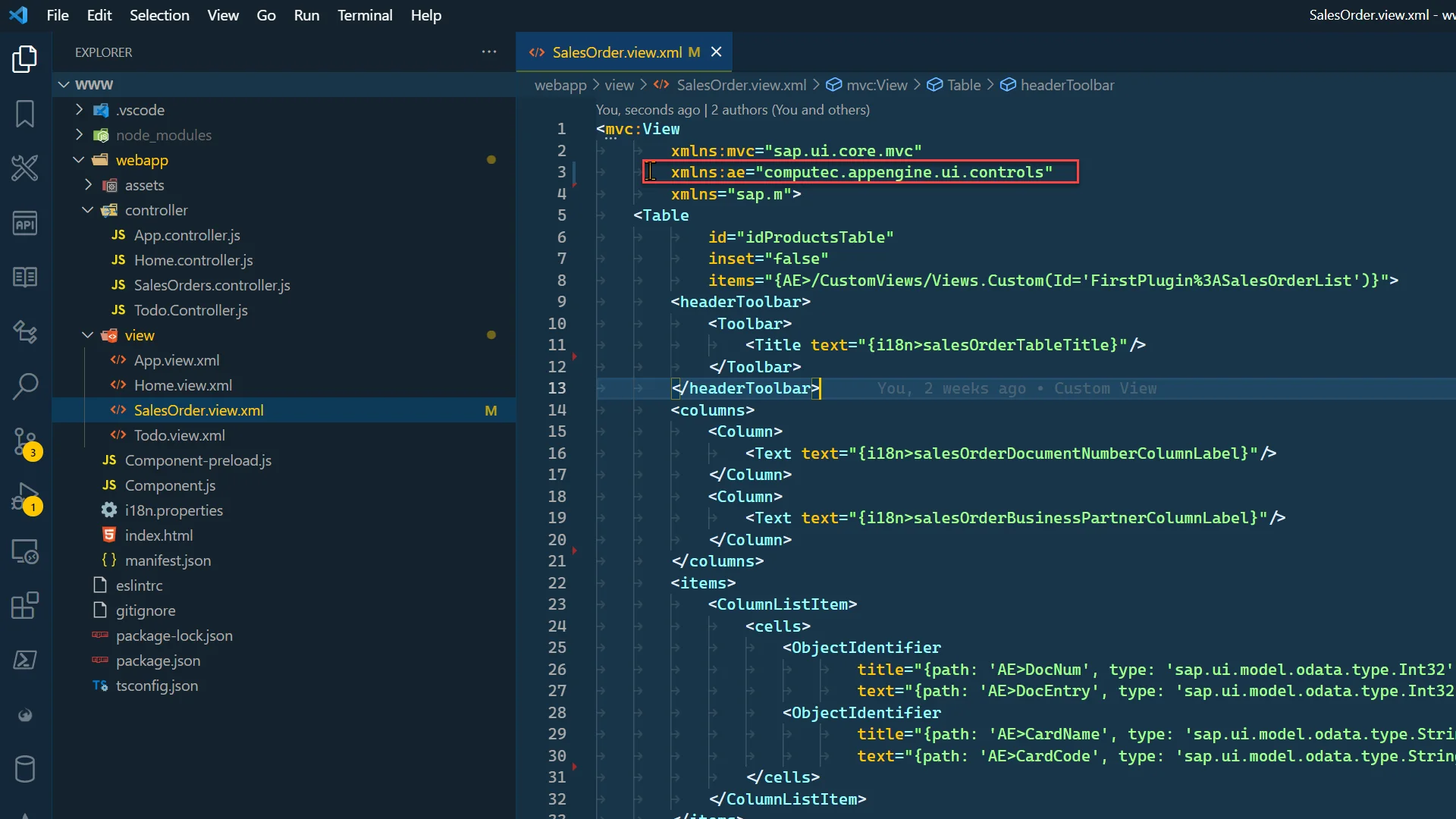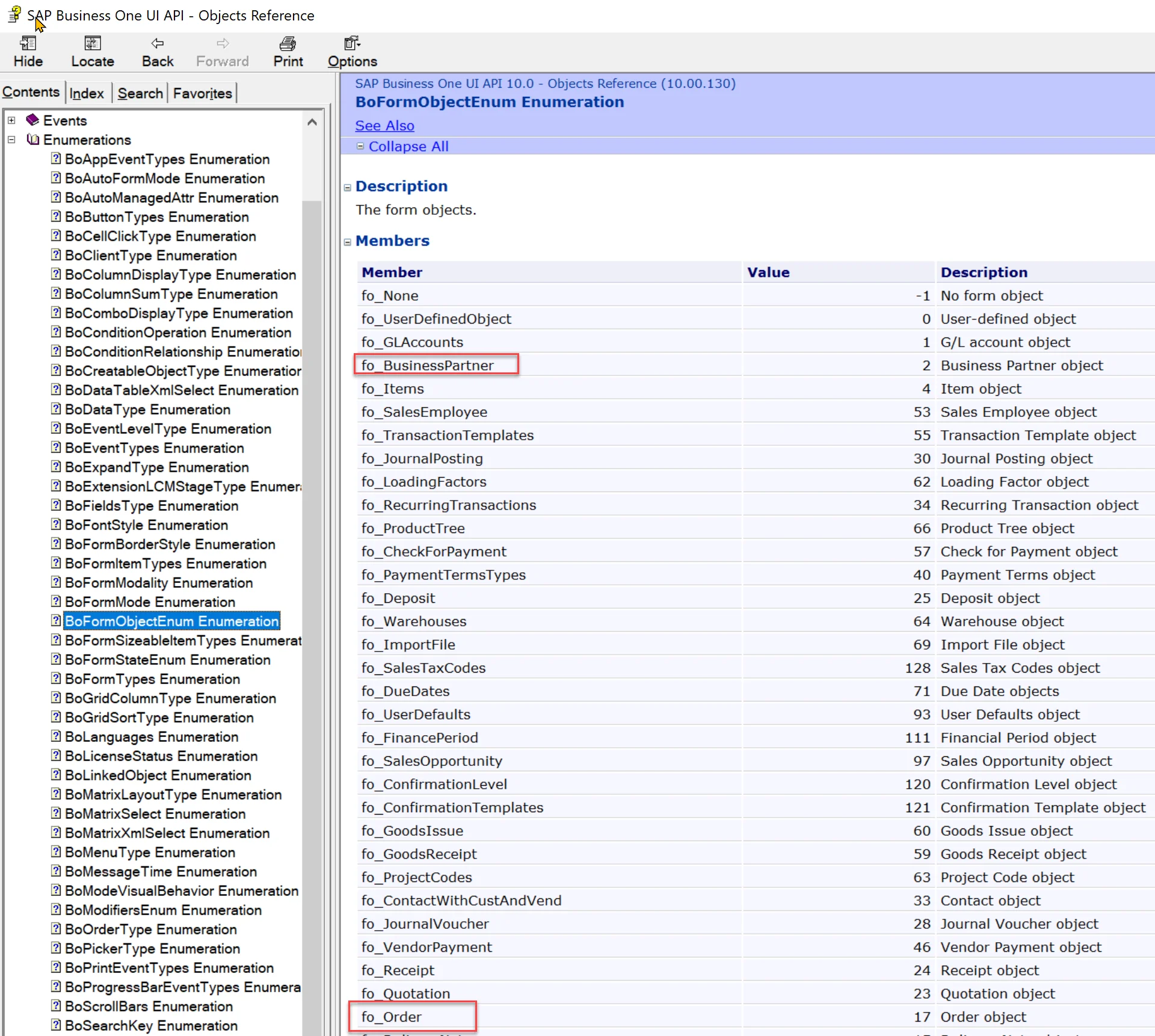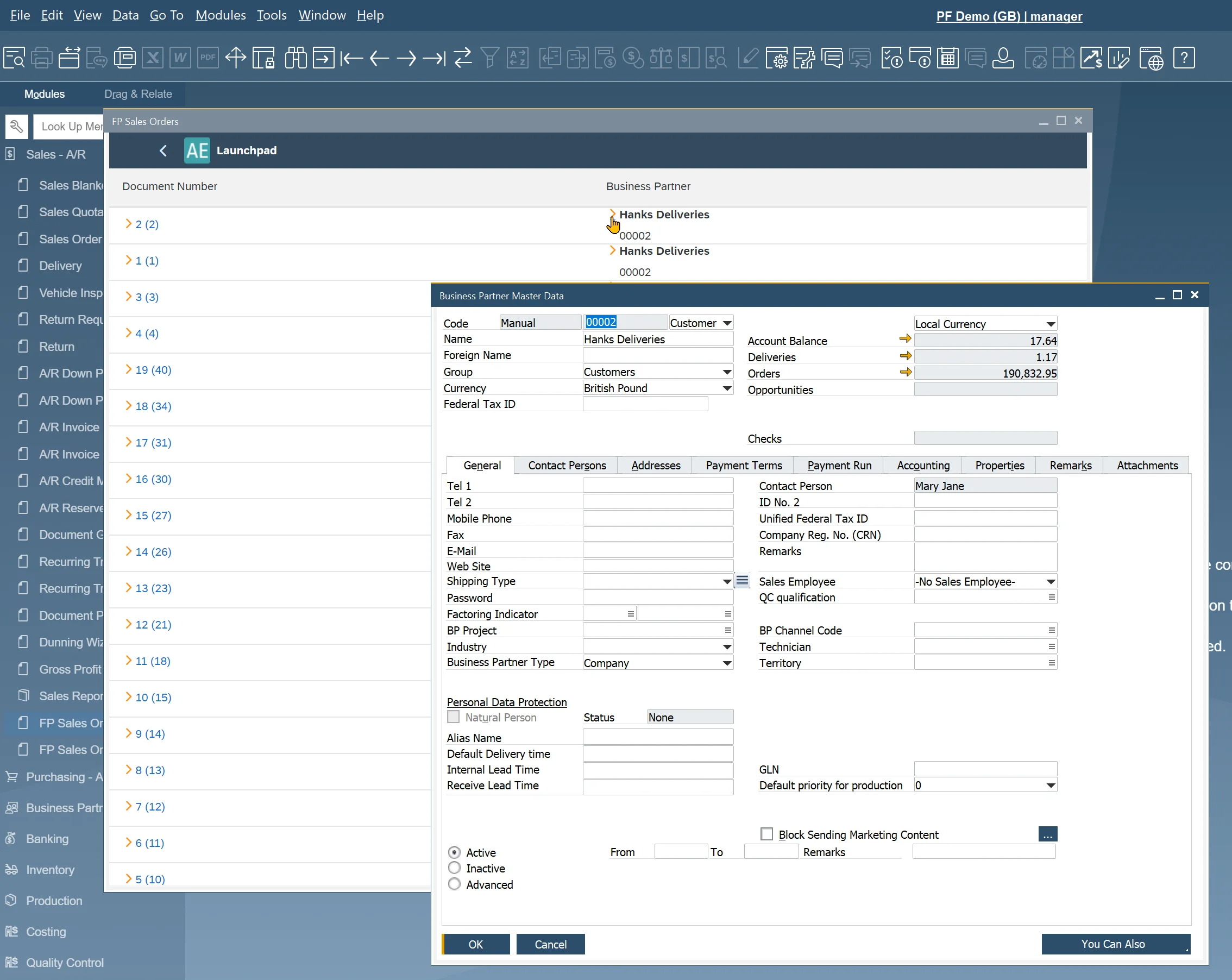You are currently viewing documentation for CompuTec AppEngine 2.0 (.NET Framework), which is still supported.
We recommend upgrading to CompuTec AppEngine 3.0 built on .NET 8, which provides better performance and a modern, centralized installation process for CompuTec ProcessForce and other CompuTec solutions.
However, please note that CompuTec AppEngine 3.0 has a different architecture, and all CompuTec components need to be updated together to ensure full compatibility.
Please review the CompuTec AppEngine 3.0 documentation before starting your installation or upgrade process.
Using ae:Link's
This guide walks you through how to integrate the ae:Link control into your CompuTec AppEngine plugin for navigating between Sales Orders and Business Partners.
Description
CompuTec AppEngine enhances this experience by providing a custom control - computec.appengine.ui.controls.link - which replicates the functionality of the familiar "yellow arrow" links. These links allow users to directly open related documents or master data records, saving time and simplifying workflows.
The CompuTec AppEngine Link control only functions when the plugin is launched from within SAP Business One.
Adding Link to Sales Orders and Business Partners
-
Open SalesOrder.view.xml:

-
Add a namespace for CompuTec AppEngine controls:
xmlns:ae="computec.appengine.ui.controls"
-
Add a Link control to the Document Number column by replacing the ObjectIdentifier with CompuTec CompuTec AppEngine ae:Link. Configure it with the following properties:
-
text: The value to be displayed. Use DocNum, and include DocEntry in parentheses using curly brackets.
-
objectType: For SAP object, this needs to be BoFormObjectEnum (or ObjectType). BoFormObjectEnum can be found in SAP Business ne SDK. In this case this will be fo_Order:

-
objectSubType: Required only for CompuTec ProcessForce objects. Leave it empty in this case.
-
key: The unique identifier of the object to open. Here, use the DocEntry of the Sales Order.
<ae:Link
text="{path: 'AE>DocNum', type: 'sap.ui.model.odata.type.Int32'} ({path: 'AE>DocEntry', type: 'sap.ui.model.odata.type.Int32'})"
objectType="fo_Order"
objectSubType=""
key="{path: 'AE>DocEntry', type: 'sap.ui.model.odata.type.Int32'}"/>
-
-
For the Business Partner field, instead of replacing the existing ObjectIdentifier, wrap it inside an HBox and place the ae:Link control alongside it. In this case, leave the text property of the link blank.
<HBox>
<ae:Link
text=""
objectType="fo_BusinessPartner"
objectSubType=""
key="{path: 'AE>CardCode', type: 'sap.ui.model.odata.type.String'}"/>
<ObjectIdentifier
title="{path: 'AE>CardName', type: 'sap.ui.model.odata.type.String'}"
text="{path: 'AE>CardCode', type: 'sap.ui.model.odata.type.String'}"/>
</HBox> -
SalesOrder.view.xml should look like this.
SalesOrder.view.xml
<mvc:View
xmlns:mvc="sap.ui.core.mvc"
xmlns:ae="computec.appengine.ui.controls"
xmlns="sap.m">
<Table
inset="false"
items="{AE>/CustomViews/Views.Custom(Id='FirstPlugin%3ASalesOrderList')}">
<headerToolbar>
<Toolbar>
<Title text="{i18n>salesOrderTableTitle}"/>
</Toolbar>
</headerToolbar>
<columns>
<Column>
<Text text="{i18n>salesOrderDocumentNumberColumnLabel}"/>
</Column>
<Column>
<Text text="{i18n>salesOrderBusinessPartnerColumnLabel}"/>
</Column>
</columns>
<items>
<ColumnListItem>
<cells>
<ae:Link
text="{path: 'AE>DocNum', type: 'sap.ui.model.odata.type.Int32'} ({path: 'AE>DocEntry', type: 'sap.ui.model.odata.type.Int32'})"
objectType="fo_Order"
objectSubType=""
key="{path: 'AE>DocEntry', type: 'sap.ui.model.odata.type.Int32'}"/>
<HBox>
<ae:Link
text=""
objectType="fo_BusinessPartner"
objectSubType=""
key="{path: 'AE>CardCode', type: 'sap.ui.model.odata.type.String'}"/>
<ObjectIdentifier
title="{path: 'AE>CardName', type: 'sap.ui.model.odata.type.String'}"
text="{path: 'AE>CardCode', type: 'sap.ui.model.odata.type.String'}"/>
</HBox>
</cells>
</ColumnListItem>
</items>
</Table>
</mvc:View>
Results
After restarting SAP Business One and reloading your plugin, the links will be active. Users can click the document number or business partner link to jump directly to the relevant form, enhancing workflow efficiency.
